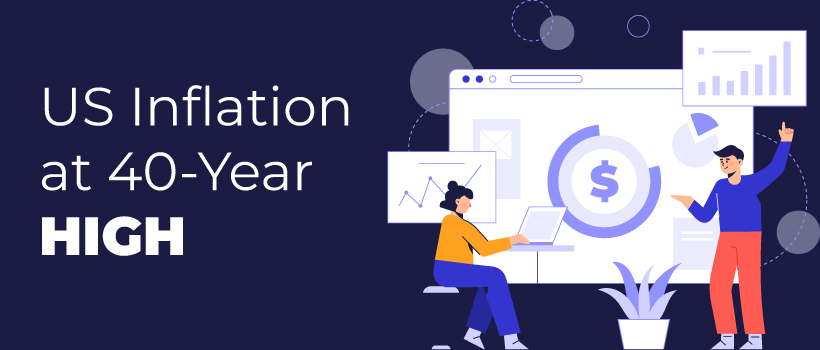US Jan-22 Inflation Comes in at 40-Year High of 7.5%

Last Updated: 8th August 2022 - 07:01 pm
After surprising the street with 6.2% inflation in Nov-21 and 7% in Dec-21, the US reported retail inflation at a whopping 7.5% in Jan-22. This is the highest level of inflation recorded in the US in the last 40 years and these levels were last seen during the Volcker era when the then FED Chairman, Paul Volcker started using the FED rates as a potent mechanism of giving monetary and policy signals. Since then, inflation has been largely in control.
Check - FED Hints at Rate Hikes from March 2022
What has changed so suddenly in the US. While the actual data is still being analysed, one of the key takeaways from the previous FED minutes has been that the inflation in the US is largely supply driven. That means; prices are rising not because of a surge in demand but because supply and output is not able to keep pace. This has been a major problem for the US and other global economies as supply chain constraints continue to plague output.
In the last three months it is not just the YoY inflation that has been at elevated levels in the US. Even the sequential month-on-month inflation has consistently been in the range of above 0.5%. For instance, the sequential inflation was 0.9% in Oct-21, 0.7% in Nov-21, 0.6% in Dec-21 and again 0.6% in Jan-22. Most of the inflation spike has been back-ended and concentrated in the last 4 months starting from October 2021 onwards.
There have been several reasons for this spike in inflation. There is a severe shortage of supplies and works in the aftermath of the pandemic. A combination of historically low interest rates and heavy doses of Federal aid to consumers have added fuel to the current level of inflation. Wages are increasing at the fastest pace in 20 years and now even the FED has given up calling the inflation hike as “transitory”, meaning it is here to stay.
What will be the outcome of this sharp spike in inflation. This has implications for the pace of rate hikes and also the quantum of rate hikes by the Fed. For instance, Goldman Sachs was pencilling in 4-5 rate hikes in 2022 till the last FED policy announcement. But, after the latest inflation announcement at 7.5%, Goldman Sachs has modified its estimates to 7 rounds of rate hikes in the current calendar year 2022 itself.
The clarity will emerge when the FED meets for the crucial March meeting of the FOMC members. The broad market consensus is that the Fed may start its rate hike program with a 50 bps rate instead of just 25 bps and the Fed may hike the rates by as much as 200 basis points in year 2022 itself. In short, the rates are likely to spike from the current level of 0.00%-0.25% to a level of 2.00%-2.25% by the end of the year 2022.
This will obviously have implications for the RBI. One can argue that the gap between inflation and Fed rates is just too high in the US, which is not the case in India. But that will not be too material once the Fed starts hiking rates. As we have seen in the past, when rates are hiked by the Fed, two things happen. Firstly, the US dollar strengthens and secondly there is a major risk-off glow that gravitates towards the US.
For the RBI, this US inflation data will have to be juxtaposed with the India inflation and growth data as well as Fed rate action in March 2022. In the Feb-22 policy, the RBI had been relatively sanguine. That may not be feasible in the April 2022 RBI policy statement.
Also Read:-
- Flat ₹20 Brokerage
- Next-gen Trading
- Advance Charting
- Actionable Ideas
Trending on 5paisa
Indian Stock Market Related Articles
Disclaimer: Investment in securities market are subject to market risks, read all the related documents carefully before investing. For detailed disclaimer please Click here.
 5paisa Research Team
5paisa Research Team
 Sachin Gupta
Sachin Gupta




